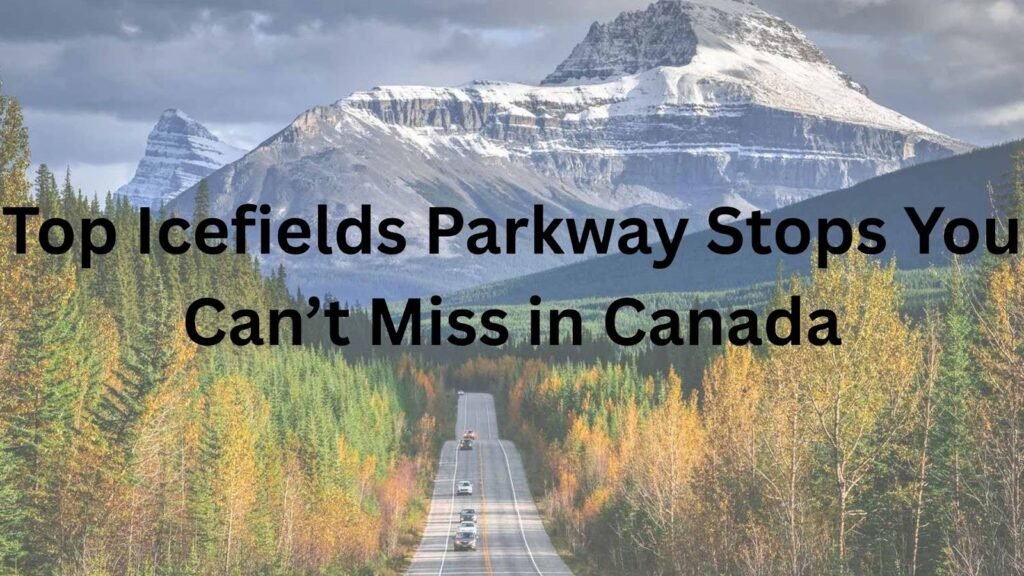The Icefields Parkway is one of the most beautiful drives on Earth. This famous route connects Banff and Jasper through the heart of the Canadian Rockies.
Stretching 232 kilometers, this road takes you past massive glaciers, bright blue lakes, roaring waterfalls, and plenty of wildlife. The drive itself takes about four hours without stopping, but you’ll want much more time than that.
This guide covers all the best Icefields Parkway stops you need to see. Each location offers something different, from quiet lakeside moments to powerful waterfalls and ancient ice formations. Plan to take your time and enjoy what makes this drive so special.
Best Stops Along the Icefields Parkway
These icefield parkway stops are the highlights of your trip. Each one gives you a chance to get out of the car and experience the mountains up close.
1. Peyto Lake and Bow Summit
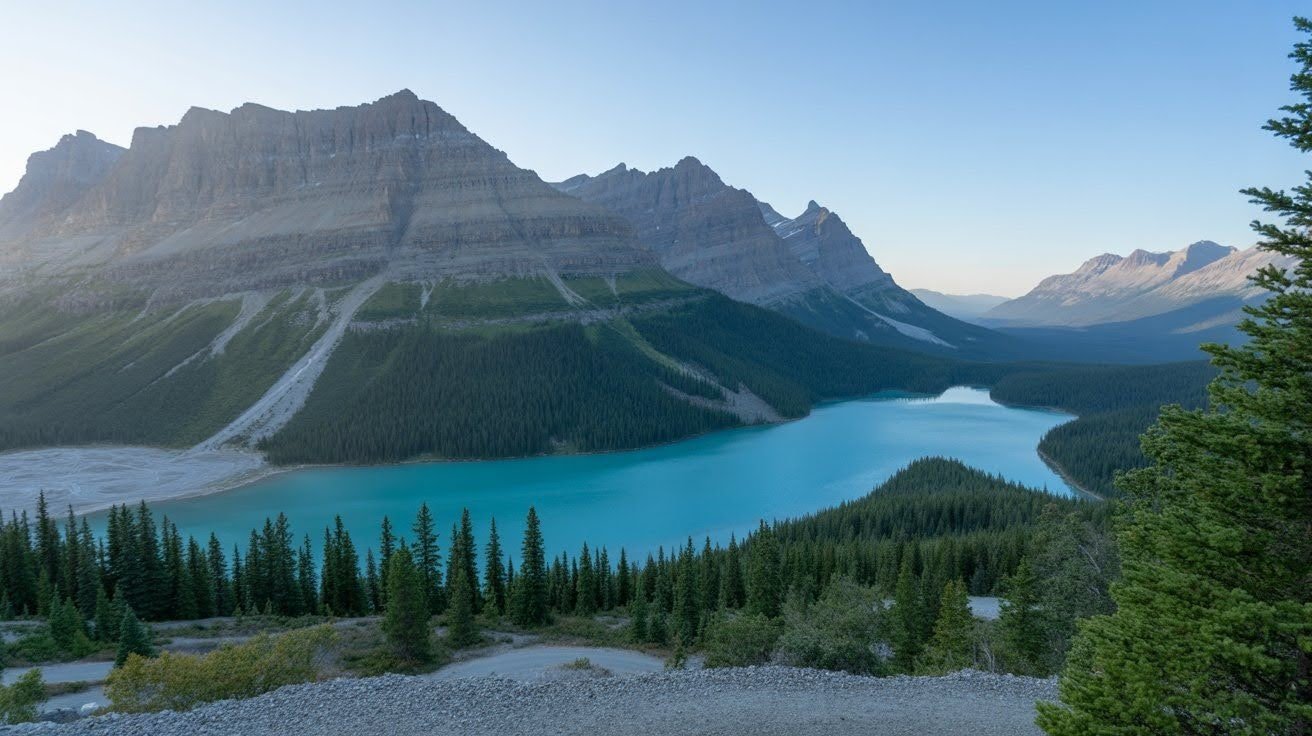
Peyto Lake sits at the highest point on the parkway at 2,088 meters. The lake gets its bright turquoise color from glacial flour, and from above, it looks like the shape of a wolf’s head.
A short uphill walk takes you to the main viewing platform. The views from here are already great, but there’s a secret worth knowing. If you follow the trail past the platform, you’ll find a rocky viewpoint through the pine trees with even better angles for photos.
This stop is perfect for photography lovers. The contrast between the bright blue water and the green forest makes for incredible pictures, especially in the morning light.
2. Bow Lake

Bow Lake offers a more peaceful experience than some of the busier stops. The clear blue waters sit right beside the road with easy parking lot access.
From the shore, you can see Crowfoot Glacier and the Wapta Icefield in the distance. This lake marks the headwaters of the Bow River, which flows all the way through Calgary. The shoreline is perfect for a quiet walk or just sitting and taking in the view.
Many visitors pass this spot quickly, which means you might have it mostly to yourself. It’s an ideal place to rest and enjoy the calm mountain atmosphere.
3. Columbia Icefield and Athabasca Glacier
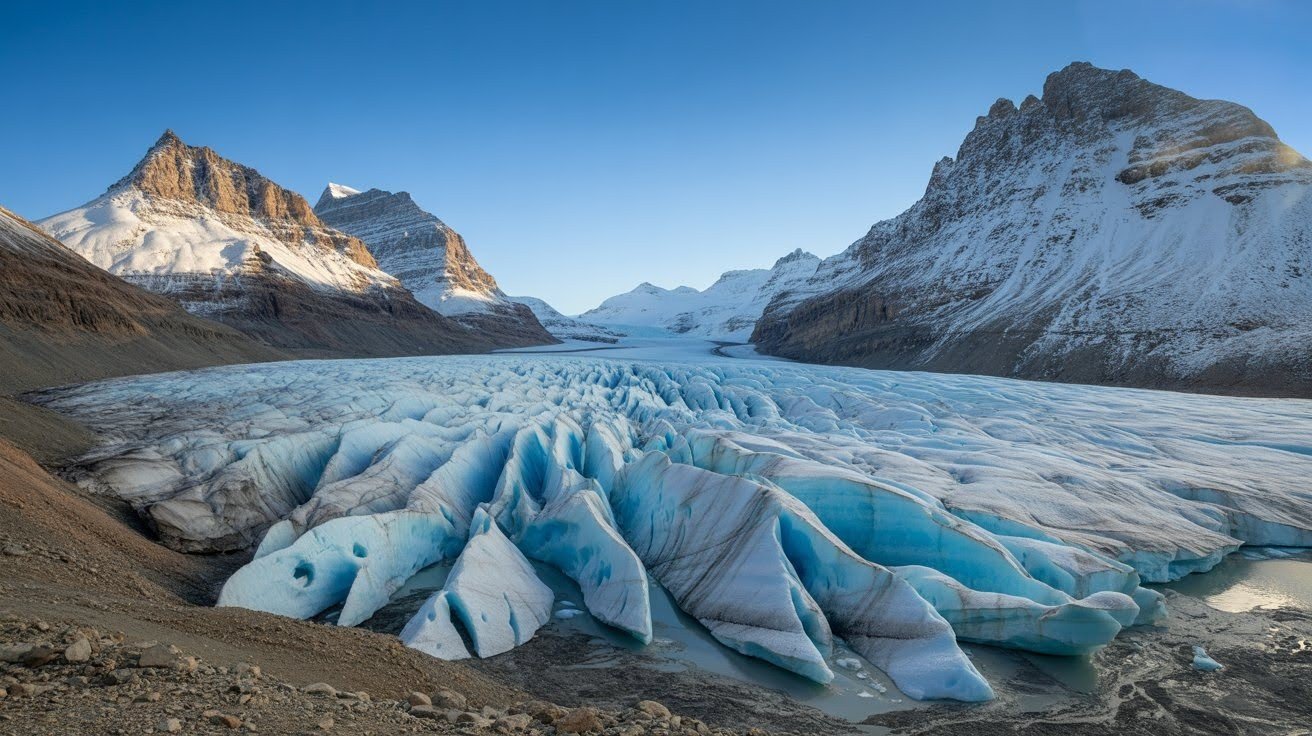
The Columbia Icefield is the largest south of the Arctic Circle. The Athabasca Glacier, which flows from this massive ice field, gives you the closest glacier access along the entire route.
You can walk right up to the toe of the glacier and feel the cold wind that comes off the ice. This glacier wind happens because cold air flows down from the ice surface. If you want a deeper experience, Ice Explorer tours take you onto the glacier itself, or you can try the Glacier Skywalk for views from above.
The Columbia Icefield Centre has a museum with 3D models that explain how glaciers form and move. This is one of the most popular icefield parkway stops, so arrive early in the day to avoid crowds.
4. Athabasca Falls
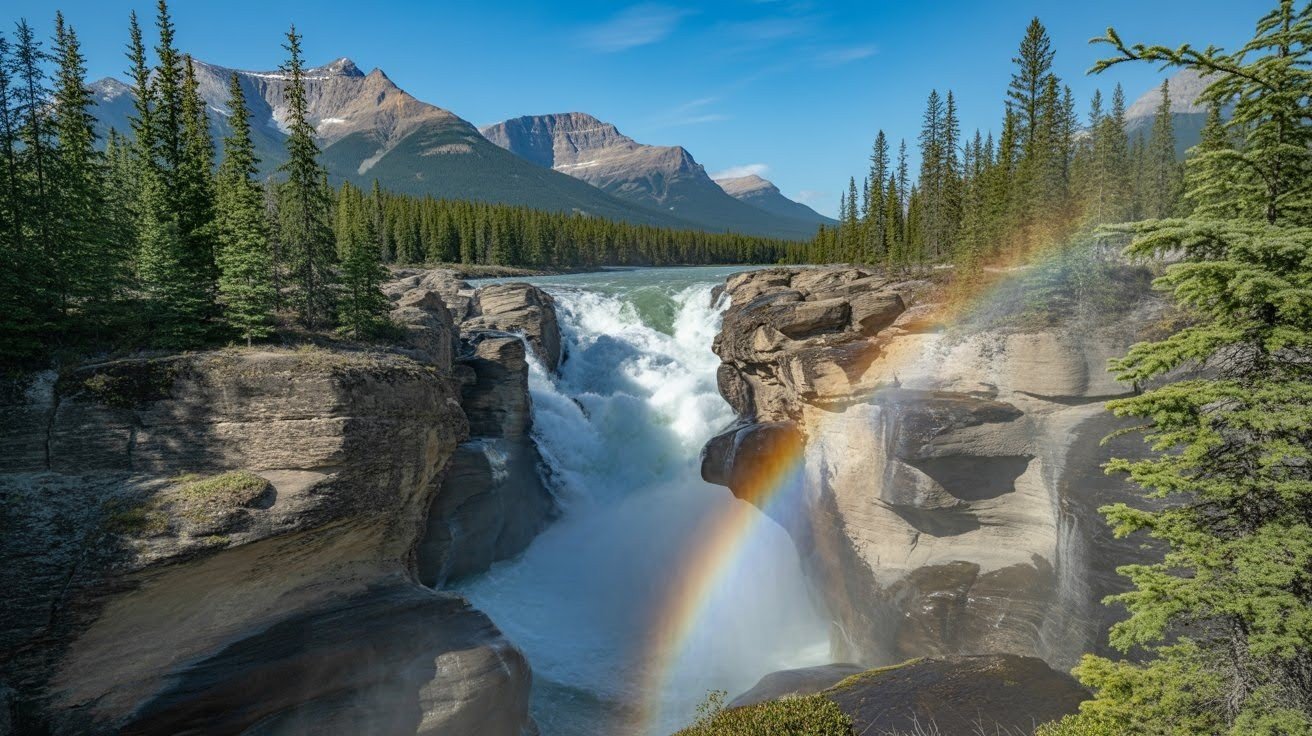
Athabasca Falls is the most powerful waterfall in the Canadian Rockies. The water drops 23 meters with incredible force and volume that you can feel from the viewing platforms.
Multiple trails and platforms let you see the falls from different angles. The mist from the pounding water often creates rainbows on sunny days. The sound alone is worth the stop.
Located just 30 kilometers south of Jasper townsite, this is one of the easier Icefield Parkway stops to reach near the end of your drive. The short walks make it accessible for all fitness levels.
5. Sunwapta Falls
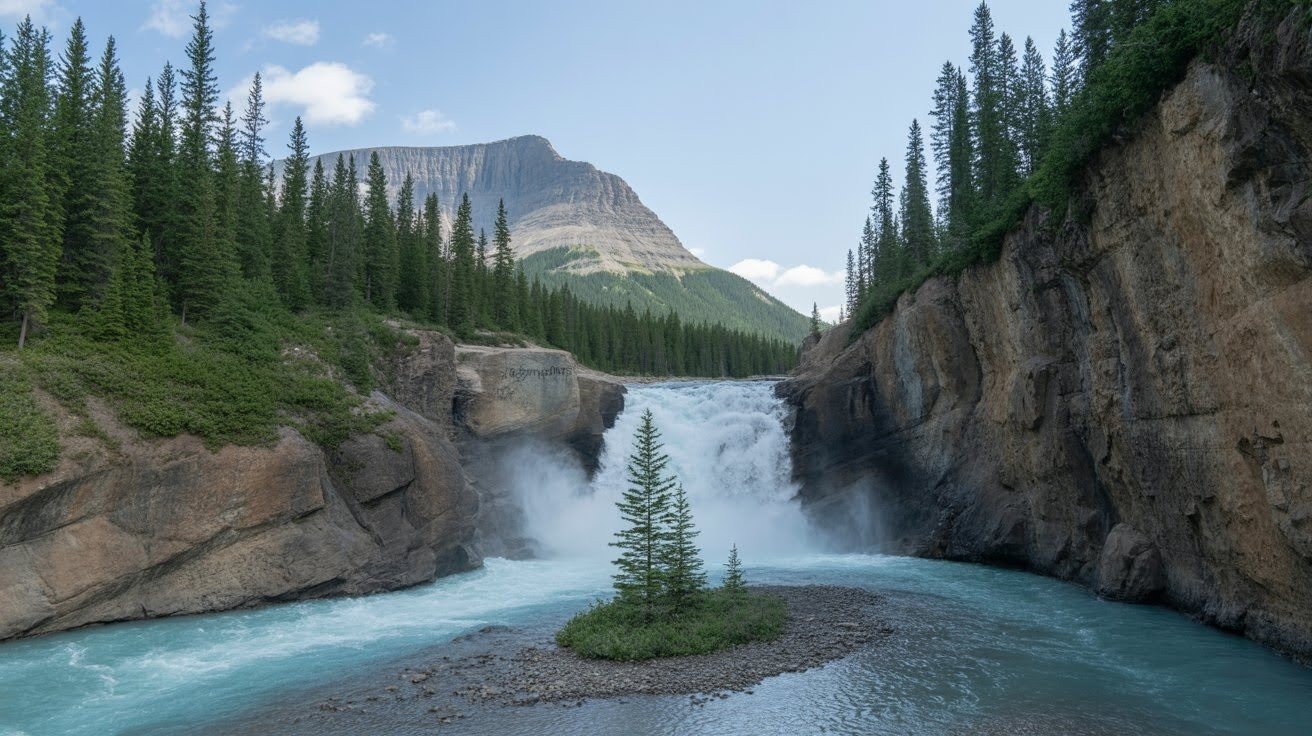
Sunwapta Falls has a unique split design where the water divides around a small island. The 18-meter drop creates Class 6 rapids that crash through a narrow canyon.
Fed by the Athabasca Glacier, the water here is glacier cold and moves with serious power. A short trail takes you to views of the downstream canyon, where you can see how the water carved through solid rock over thousands of years.
This spot tends to be less crowded than Athabasca Falls, even though it’s just as impressive. The canyon views make it worth the quick detour from the main road.
6. Weeping Wall

The Weeping Wall stretches over 100 meters up the side of Cirrus Mountain. Multiple streams of water cascade down the rock face, with the main fall called “Teardrop.”
This is one of the quickest icefieldarkway stops since you can see it right from the road. Pull into the small parking area, take your photos, and you’re back on your way in minutes.
The best time to see the Weeping Wall is late spring or early summer when snowmelt makes the water flow strongest. By late summer, the flow decreases significantly.
7. Saskatchewan River Crossing
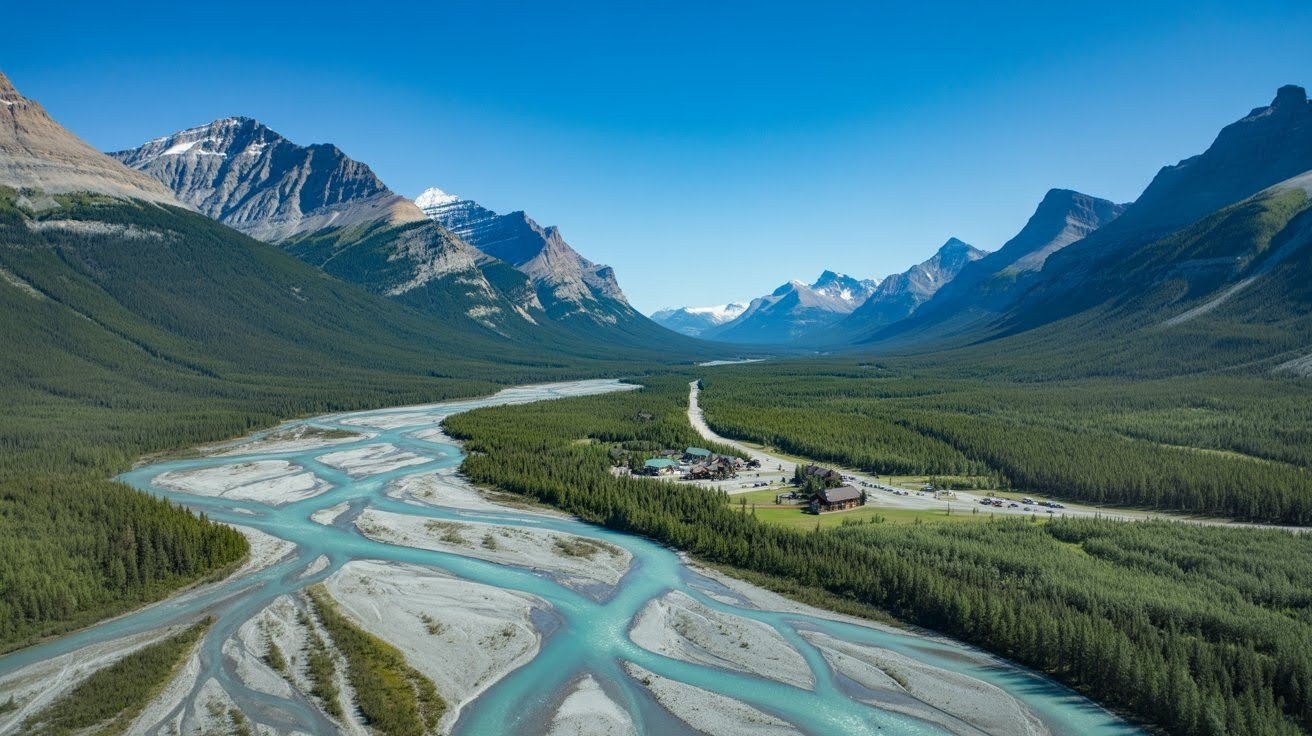
Three rivers meet at this location: the North Saskatchewan, Howse, and Mistaya Rivers. This spot serves an important practical purpose as the only service stop along the entire parkway.
You’ll find a gas station, restaurant, and public restrooms here. It’s also the starting point for some Columbia Icefield tours. The location sits roughly in the middle of the drive, making it the natural place to take a break.
Fuel prices here are higher than in Banff or Jasper, but it’s your only option between the two towns. Plan your gas stops accordingly when mapping out your Icefields Parkway stops.
Essential Tips for Your Icefields Parkway Drive
Making the most of the Icefields Parkway stops requires some planning.
- Plan Your Time Wisely: Don’t try to rush this drive in a single day. Split it into two days if possible, or at least select your top priority stops and give yourself plenty of time. Wildlife sightings and unexpected photo opportunities will slow you down, and that’s exactly what you want.
- Wildlife Viewing: The parkway is home to elk, bighorn sheep, black bears, grizzly bears, and mountain goats. Always keep a safe distance from all wildlife. Never approach or feed any animals, no matter how calm they seem. Wildlife is most active at dawn and dusk, so drive extra carefully during these times.
- Pack Food and Water: Besides Saskatchewan River Crossing, there are no restaurants along the route. Bring picnic supplies so you can eat beside a river or lake. If you have a water filter, you can safely drink from glacier-fed rivers like the Athabasca. Otherwise, bring plenty of water since facilities are limited.
- Fuel Up Before You Go: Saskatchewan River Crossing has the only gas station, and prices are much higher than in town. Fill your tank in Banff or Jasper before starting your drive. Check your fuel level regularly and don’t let it get too low.
- Best Time to Visit: Late spring through early fall offers the best accessibility. Summer brings full waterfall flow and longer daylight hours. September combines beautiful fall colors with smaller crowds since most tourists leave after Labor Day. Some trails close in late spring to protect the landscape during sensitive growing periods.
Planning makes your experience at the Icefields Parkway stops much more enjoyable and stress-free.
Conclusion
The Icefields Parkway stops offer an incredible variety of natural features. In one drive, you’ll see ancient glaciers, turquoise lakes, powerful waterfalls, and three converging rivers.
Take your time at each location. The best experiences come when you’re not rushing from one spot to the next. This really is one of the world’s most beautiful drives, and it deserves your full attention.
Stay flexible with your schedule. If a location calls to you, spend extra time there. The wilderness of the Canadian Rockies has its own rhythm, and the best way to experience it is to slow down and soak it all in.
The road itself is just as important as the stops. Keep your eyes open between locations for wildlife, mountain views, and moments of natural beauty that aren’t marked on any map.
Frequently Asked Questions
How Long Does It Take to Drive the Entire Icefields Parkway?
The straight drive takes four hours without stops. However, most visitors need a full day or two days to properly enjoy the Icefields Parkway stops and wildlife viewing opportunities.
Do I Need a Park Pass to Travel the Icefields Parkway?
Yes, you must have a valid Parks Canada pass. The parkway runs through both Banff and Jasper National Parks, so one pass covers your entire trip along this route.
Is the Icefields Parkway Open Year Round?
The road is generally open all year, but winter brings challenging driving conditions with ice and snow. Occasional closures happen due to weather. May through October offer the best conditions.
Can I See the Northern Lights From the Icefields Parkway?
Yes, the northern lights are possible during the winter months. The parkway is a dark sky area with minimal light pollution. Best viewing happens on clear winter nights between September and March.
Are There Camping Options Along the Icefields Parkway?
Several campgrounds are located along the route. Reservations are highly recommended during the summer months. Backcountry camping options are also available for those with proper permits and experience.

